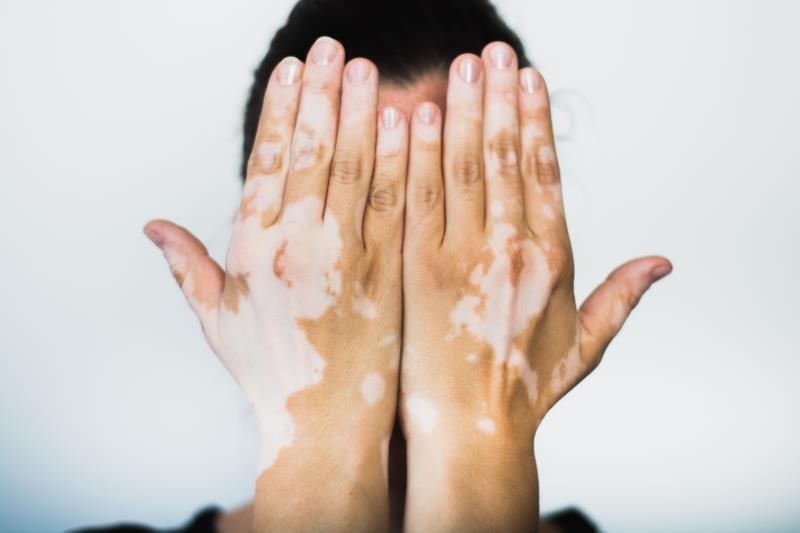Is vitiligo as side effect a good sign for cancer patients on immunotherapy?





Vitiligo occurs as a cutaneous immune-related adverse event during immune checkpoint inhibitor (ICI) therapy in most melanoma and nonmelanoma cancer patients with partial or complete response to treatment, according to a systematic review.
Pooled data from 23 studies showed that in a limited cohort of 24 cancer patients (median age 61.3 years, 62.5 percent male, 20.8 percent Caucasian) who had ICI-induced vitiligo, 20.8 percent achieved complete disease resolution and 37.5 percent achieved partial disease resolution on ICI, the authors reported. [AAD 2025, poster 60213]
The median time to vitiligo onset was 12 weeks (range, 1–80), after a median of three (range, 1-30) ICI doses. The most common vitiligo presentation was diffuse (66.7 percent), followed by head/neck (8.3 percent) and trunk (8.3 percent).
In terms of primary cancer site, most patients had melanoma (37.5 percent), nonsmall cell lung cancer (16.7 percent), or squamous cell carcinoma (12.5 percent). Others had renal cell carcinoma (8.3 percent), pulmonary adenocarcinoma (8.3 percent), soft tissue sarcoma (4.2 percent), gastric adenocarcinoma (4.2 percent), hepatocellular carcinoma (4.2 percent), or papillary adenocarcinoma (4.2 percent).
Complete or partial responses to immunotherapy were documented in 66.6 percent and 53.3 percent of melanoma and nonmelanoma patients, respectively.
With regard to ICIs used, monotherapy with the anti-PD1 inhibitors nivolumab (50.0 percent) and pembrolizumab (29.2 percent) were the most frequent. Other patients received ipilimumab (8.3 percent), camrelizumab (4.2 percent), tislelizumab (4.2 percent), or combination therapy with nivolumab plus ipilimumab (4.2 percent).
“Our findings suggest that vitiligo is a common cutaneous immune-related adverse event typically presenting in patients with melanoma and nonsmall cell lung cancer… Most patients with ICI-induced vitiligo appeared to show a positive response to ICIs,” the authors said. “[This] supports the hypothesis of vitiligo portending a favourable outcome.”
They emphasized that while vitiligo onset at 12 weeks may serve as an early indicator for treatment efficacy, the time it takes for vitiligo to appear may vary widely among patients.
“Identifying patient groups likely to develop vitiligo may help dermatologists stratify their patients on ICIs based on risk profile and possible response to treatment, and tailor follow-up and supportive care accordingly,” the authors noted.
They acknowledged several limitations to the review, including small sample size, selection bias, lack of long-term outcomes, and lack of higher-quality studies such as randomized trials.
“Further research is needed to validate these findings among larger cohorts and explore underlying immunologic mechanisms of ICI-induced vitiligo, which could ultimately improve management and patient outcomes in oncology,” the authors said. “This information could provide valuable insights into the patient burden of vitiligo and corroborate the association of vitiligo as a prognostic marker.”